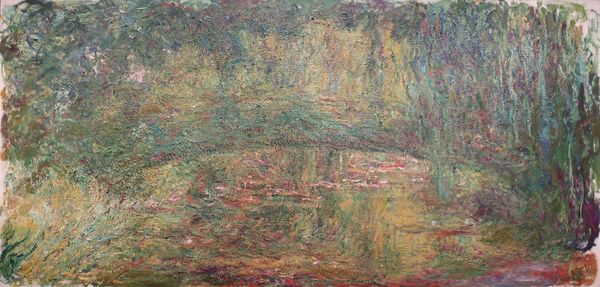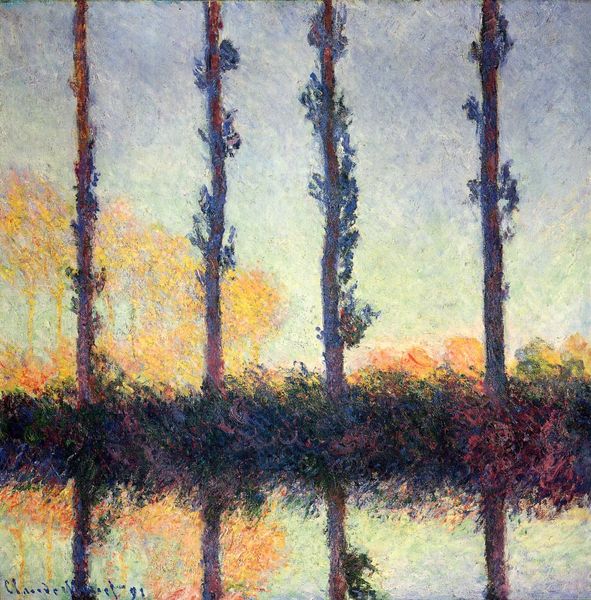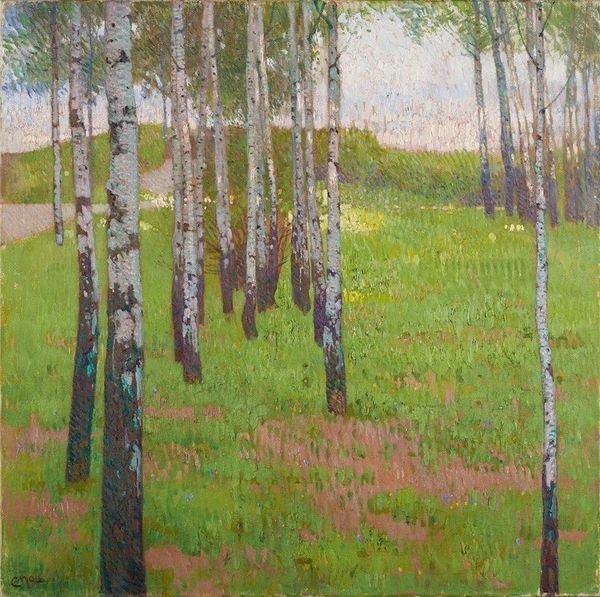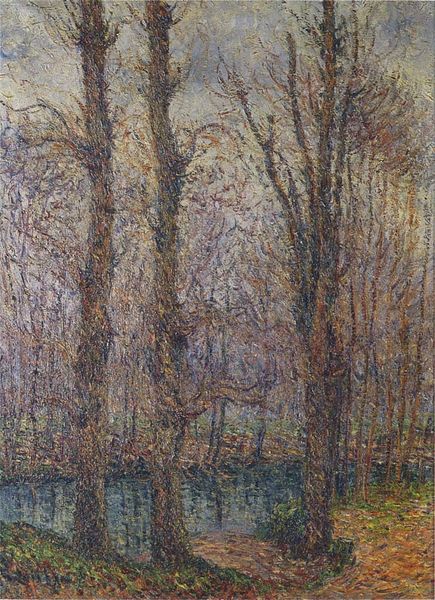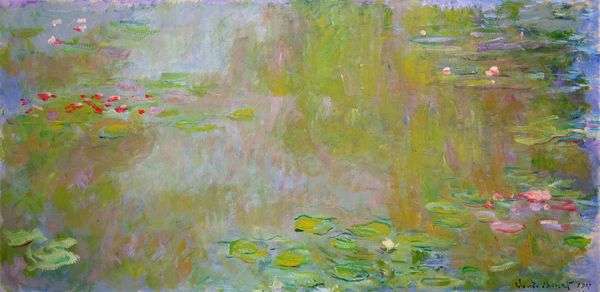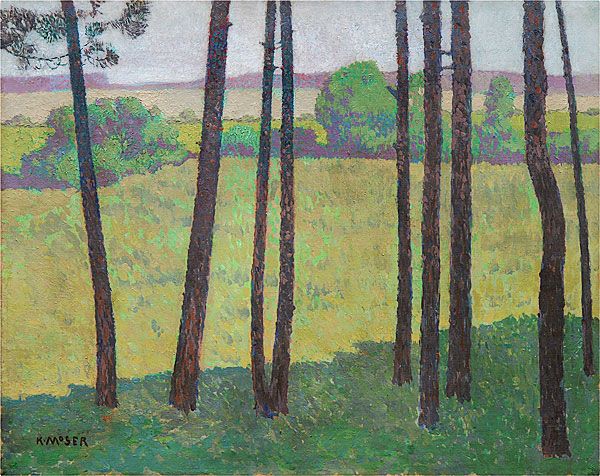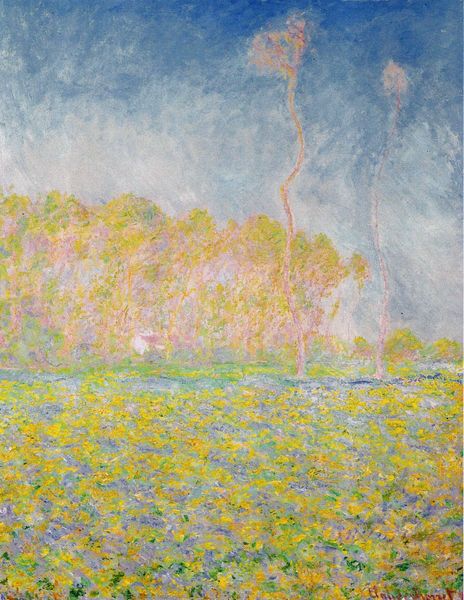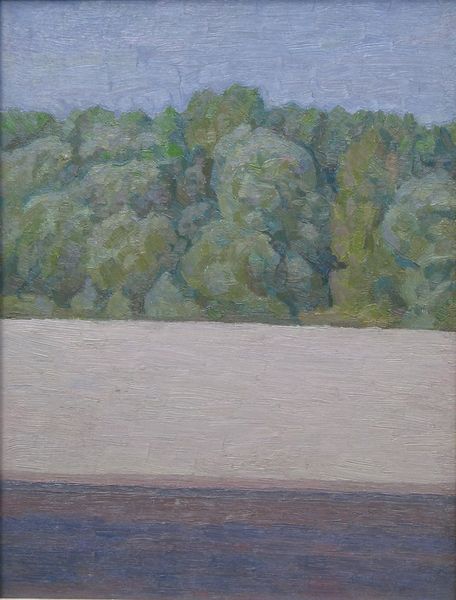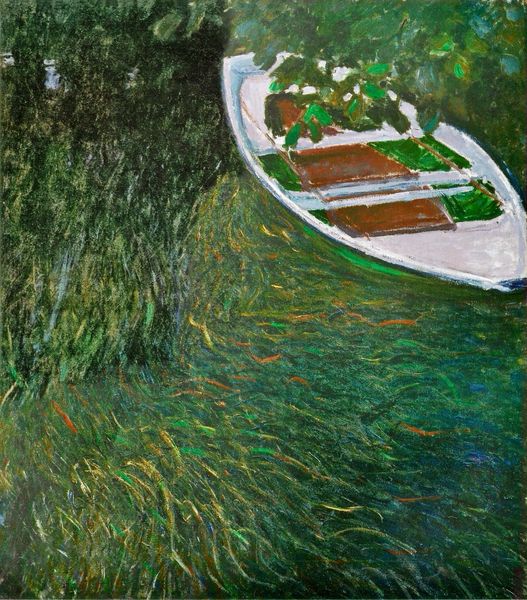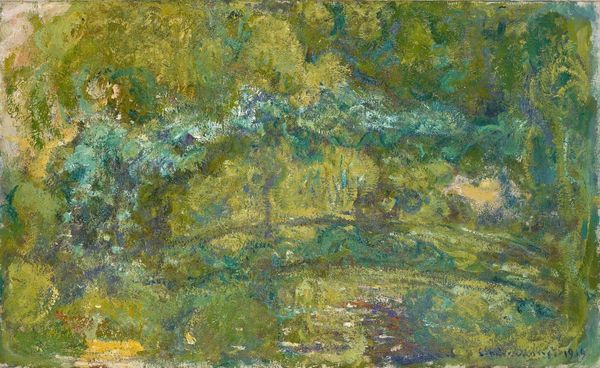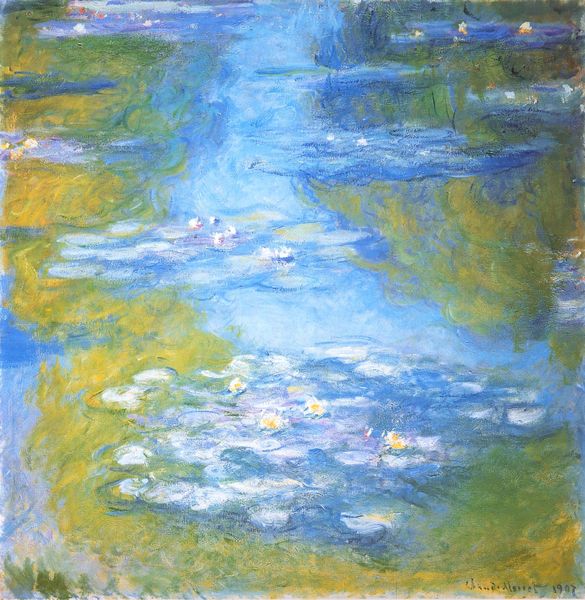
Dimensions: 90 x 90 cm
Copyright: Public domain
Curator: Let’s turn our attention to "Lakeside with Birch Trees," an oil on canvas landscape created by Gustav Klimt in 1901. Editor: It’s strikingly tranquil. The composition is so subtly balanced, with the vertical birch trunks playing against the reflected forest in the still water. The colours are muted but vibrant somehow, creating a contemplative atmosphere. Curator: Indeed. Klimt was moving away from the academic painting of the Viennese Künstlerhaus at this time, toward a personalized form of Impressionism. We see this quiet intensity emerge as a contrast to his more allegorical, figurative works and a break from social expectations. The composition reflects growing industrialization, celebrating nature amid increased urbanization and political angst. Editor: It’s fascinating how Klimt uses these vertical lines to dissect the canvas—they’re like visual pauses, aren’t they? Notice how the colour is applied, almost pointillistic, to capture fleeting light and shadow, really pushing at the limits of visual perception. The meadow with its scattering of yellows also makes it such a pleasure to simply behold, inviting meditation. Curator: Absolutely. Also, consider Klimt’s growing social position at this time, which would have given him freedom in how he chose to portray landscape, and reflect perhaps the ideals of his wealthy, influential patrons. This aesthetic approach afforded him freedom of creative license and the financial ability to go deeper into an already radical approach, thus gaining influence among his fellow artists. Editor: The simplification of form combined with the vibrant brushwork allows Klimt to achieve this incredibly decorative surface; it’s almost as if nature is ornament. You can trace Art Nouveau sensibility here in the use of patterns. The overall effect transcends naturalism toward something profoundly aesthetic. Curator: It reveals how art mirrors, but also reshapes our perception. How powerful to witness a single landscape that is rich in nuance and commentary during societal transformation. Editor: An eloquent reminder to embrace slow looking, encouraging us to consider the quiet revolutionary visual language inherent within Klimt’s oeuvre.
Comments
No comments
Be the first to comment and join the conversation on the ultimate creative platform.
